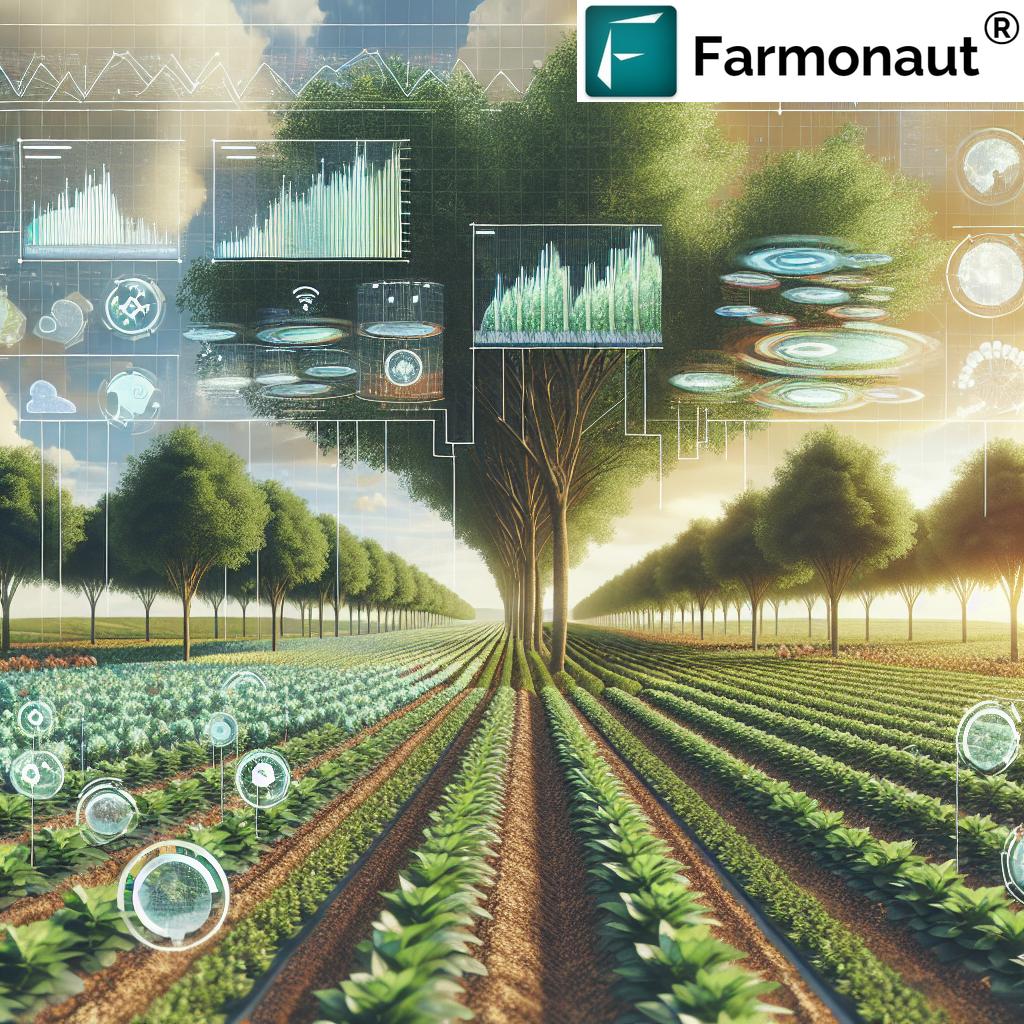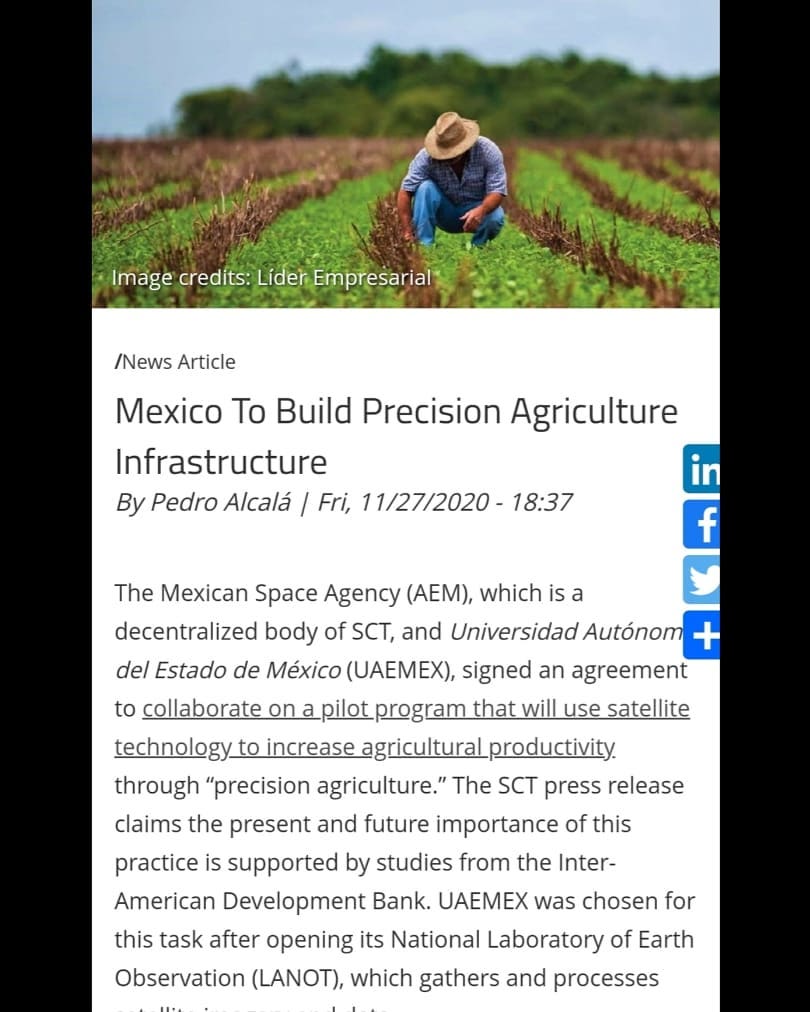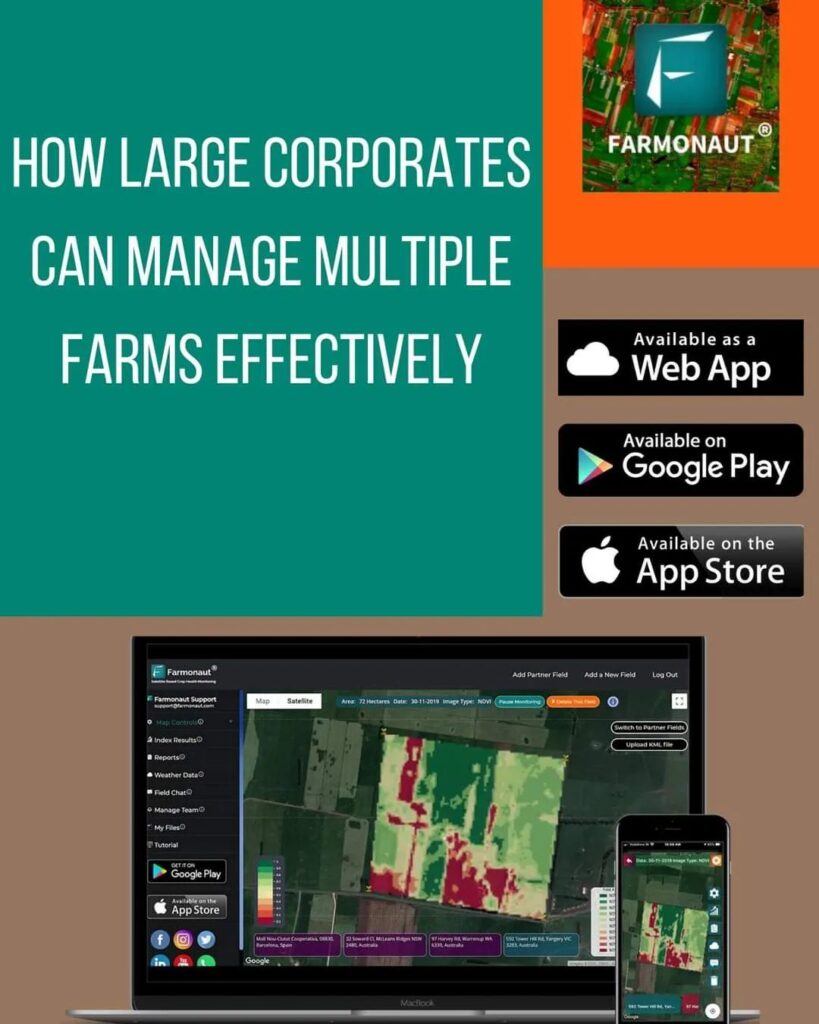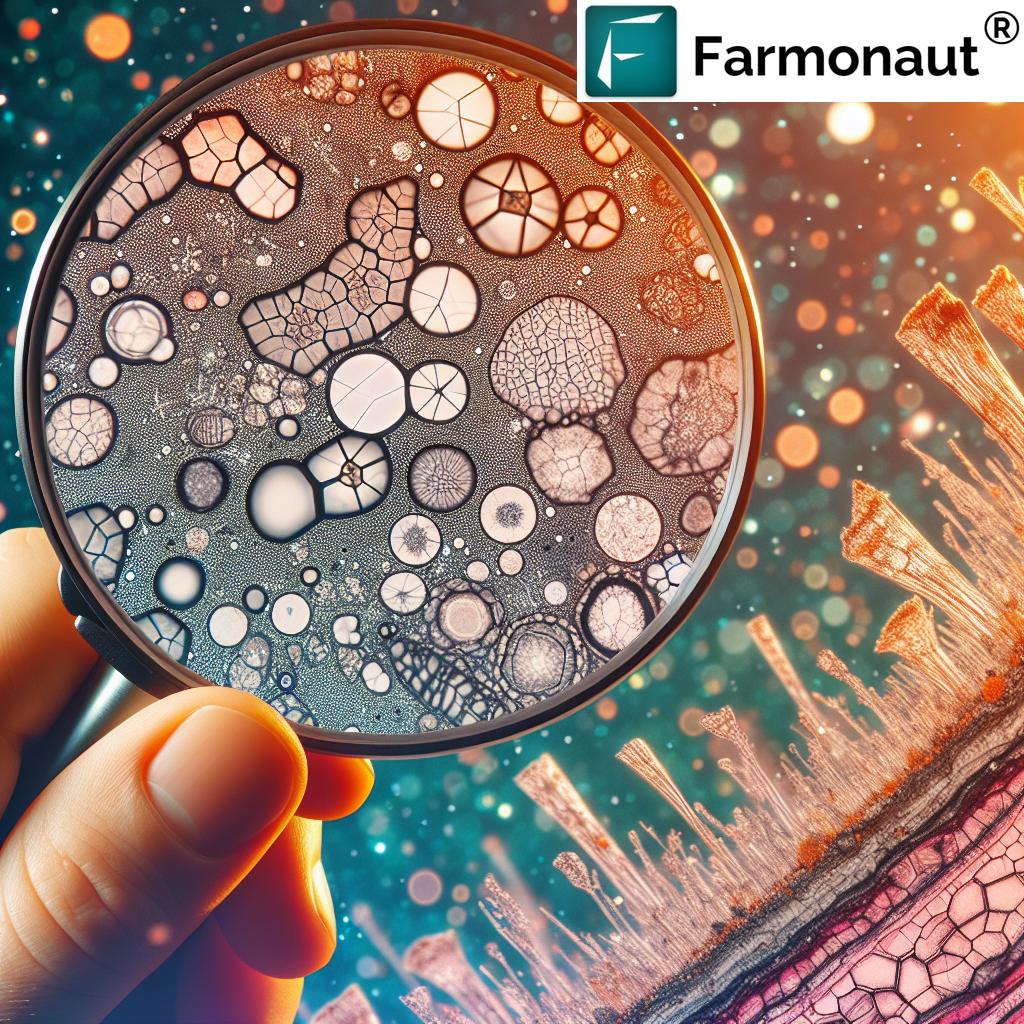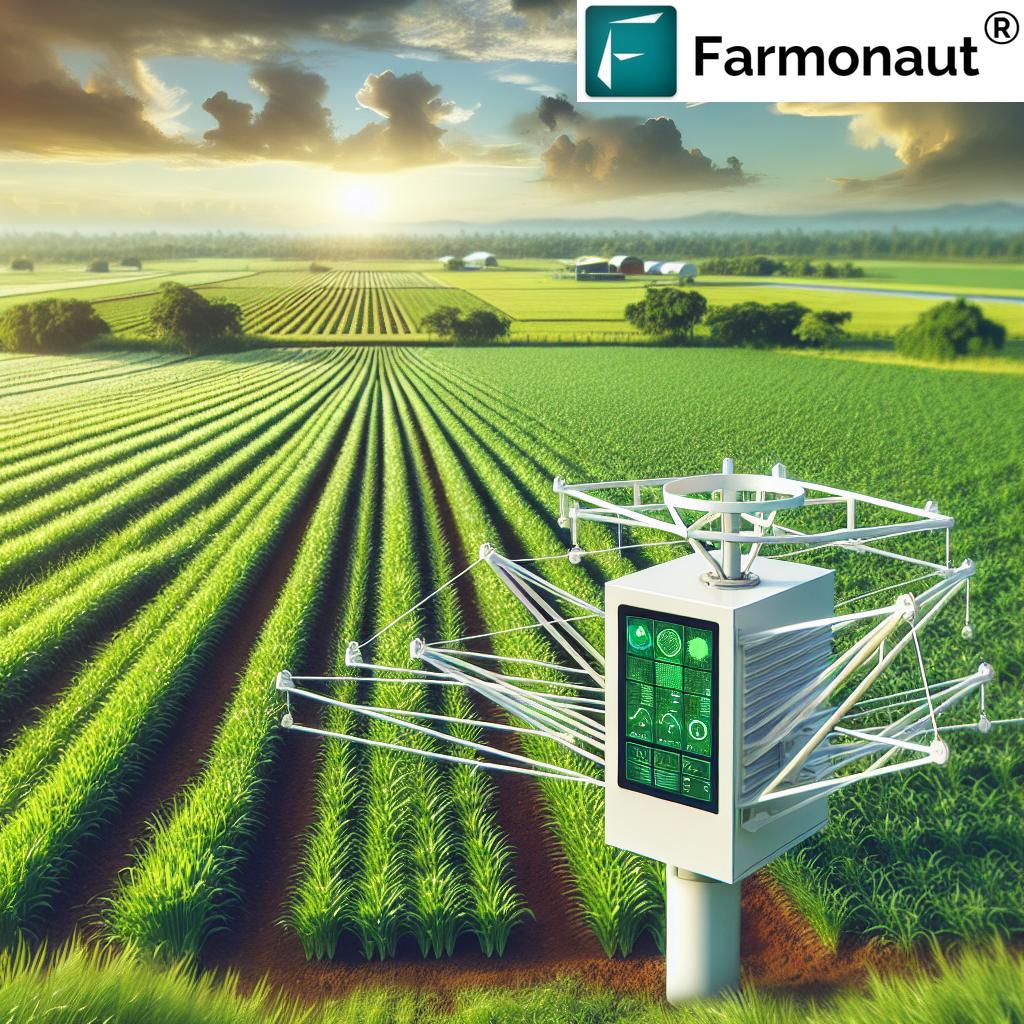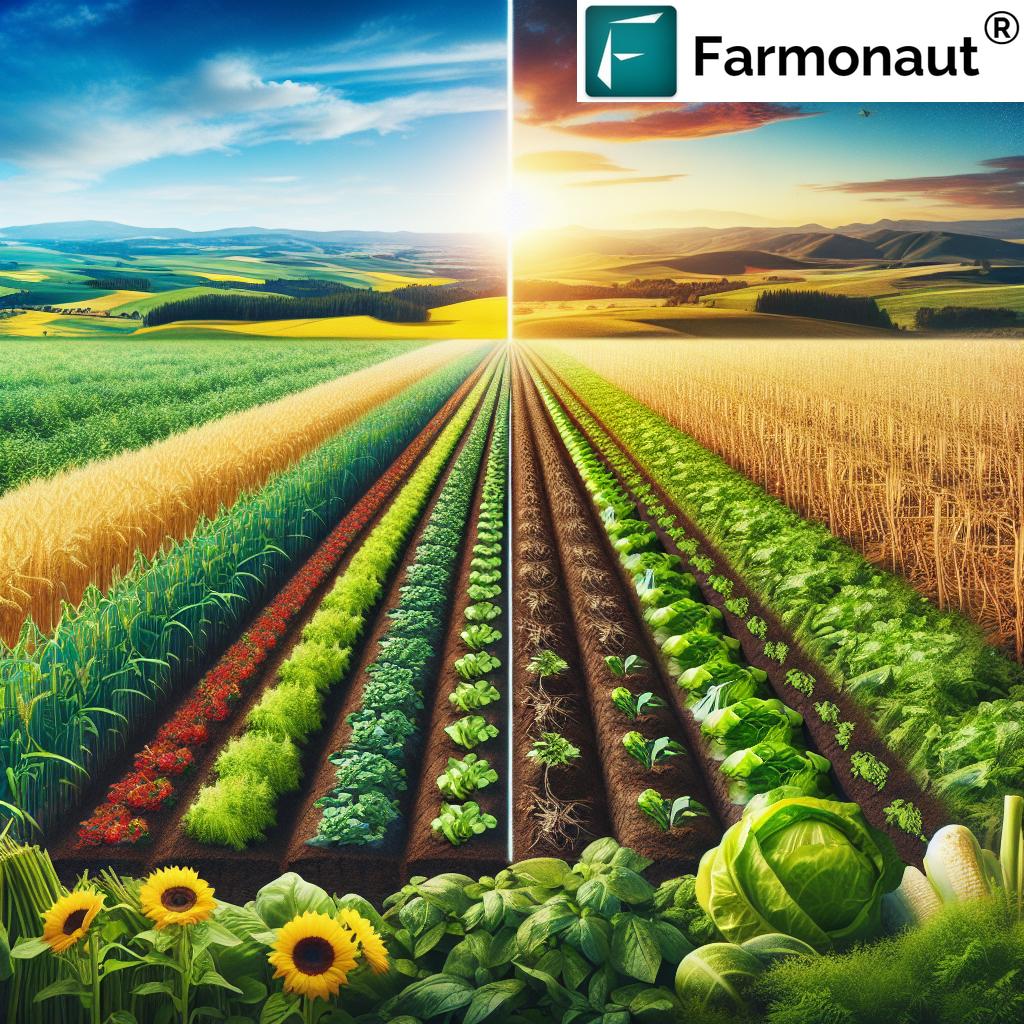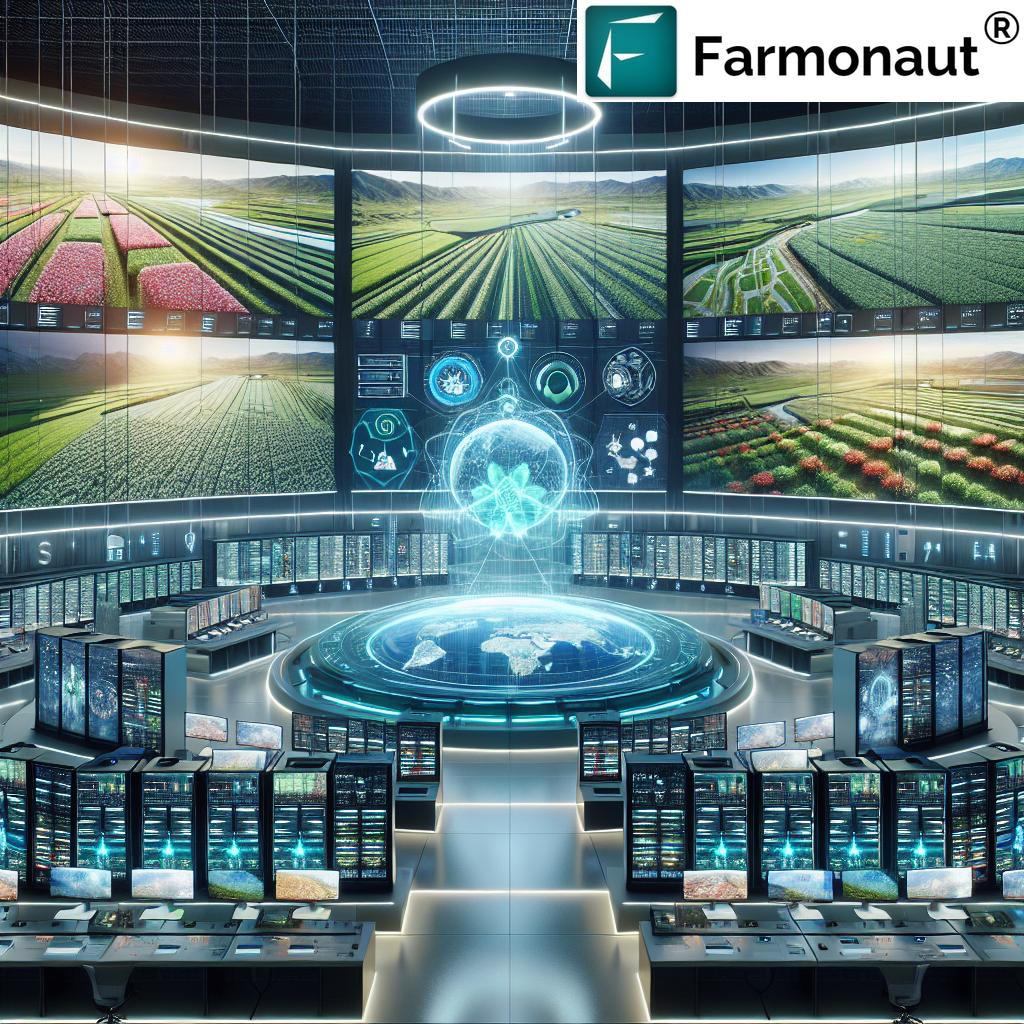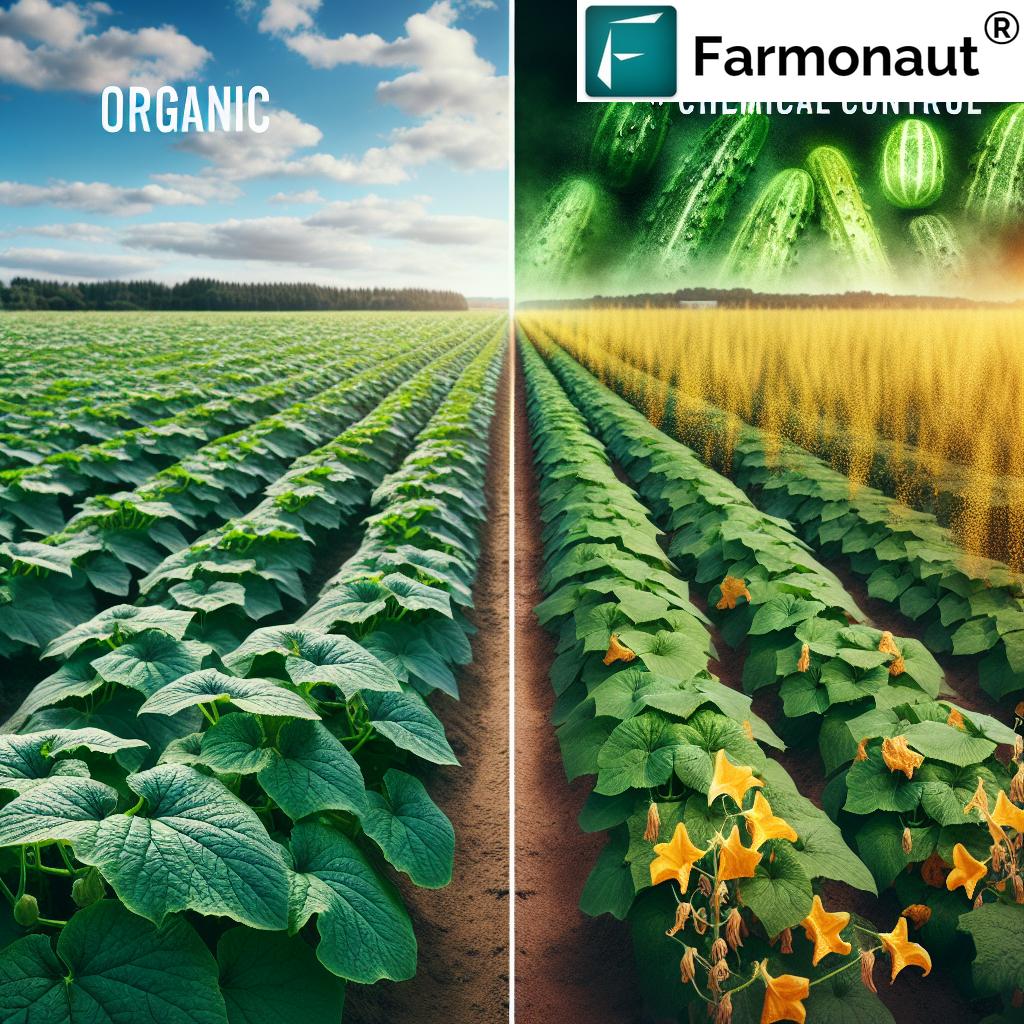AgTech Innovations: 7 Powerful Ways Data Transforms Farming
“Over 70% of farmers using AgTech report increased crop yields through data-driven precision agriculture techniques.”
Introduction: The Rise of AgTech in Agriculture
Agriculture—a foundation of our civilization—faces unprecedented challenges: climate change, resource scarcity, labor shortages, and a rapidly growing population drive the urgent need for sustainable and efficient farming. Enter AgTech (agricultural technology), an ecosystem of innovations fueled by data, precision, IoT devices, automation, analytics, AI, and biotechnology. These advanced technologies redefine how farmers, agribusinesses, and entire food systems approach everything from soil management to harvesting, making sustainable agriculture more than a buzzword—it’s now a data-driven reality.
In this comprehensive exploration, we discover 7 powerful ways data transforms farming practices globally, integrating core innovations—from precision agriculture to agroforestry integration. We’ll also examine how Farmonaut is pioneering these changes by delivering affordable, AI-powered, satellite-based solutions for real-time decision-making.
1. Precision Agriculture: The Cornerstone of Modern Farming
The shift from intuition to data-driven precision agriculture marks one of the most profound transformations in modern farming. At its core, precision agriculture is a management strategy that uses data analytics, satellite imagery, IoT devices, GPS, and remote sensing to monitor and manage variability within fields—on a near-plant or subfield level.
What Is Precision Agriculture?
Precision agriculture (PA) is the science of using advanced technologies and data to optimize field-level management of crops, soil, and livestock. By collecting and analyzing data on soil health, moisture levels, crop conditions, and weather, PA allows farmers to make informed decisions that directly impact yields, resource efficiency, and sustainability.
- Utilizes satellite imagery, remote sensing, and IoT sensors to monitor variability within fields.
- Supports variable-rate application of inputs such as water, fertilizer, and pesticides.
- Enables site-specific interventions and resource optimization.
Real-World Impact
Modern precision agriculture systems translate remotely sensed indices (NDVI, EVI, SAVI) and weather data into actionable farm insights. For example:
- Detecting crop stress: Leaf-level changes, unnoticed by the naked eye, get highlighted via spectral imaging—empowering early intervention.
- Optimizing irrigation: Soil moisture sensors and data analysis help direct water only where and when plants need it, dramatically cutting consumption and preventing over-irrigation.
- Variable-rate fertilization: Fertilizer is only applied where soil nutrient levels—monitored with sensors and satellite imagery—dictate, reducing costs and runoff.
In regions with water scarcity, deploying precision irrigation underpins both efficiency and sustainability.
The Role of IoT, GPS, and Remote Sensing
IoT devices for agriculture such as soil probes, crop cameras, and weather stations continually collect and transmit data on environmental conditions. GPS-equipped tractors and implement machinery contribute to centimeter-level accuracy in planting, spraying, and harvesting. Remote sensing from drones and satellites provides wide-area crop health assessments, bringing the field to the farmer’s fingertips.
Farmonaut’s Approach to Precision Agriculture
At Farmonaut, we believe precision agriculture should be accessible to all. By leveraging satellite data and our proprietary AI-based advisory systems, our mobile and web apps deliver instant insights about crop health, soil moisture, and nutrient levels—with no need for expensive hardware installations. Our mission is to democratize advanced agricultural technology and empower sustainable, data-driven success for farmers worldwide.
Explore Farmonaut’s Large-Scale Farm Management Platform
Optimize farm operations using advanced satellite monitoring and centralized data dashboards for estates, cooperatives, and agribusinesses.
2. Automation & Robotics: Redefining Labor in Agriculture
The twin revolutions of automation in agriculture and robotics are driving efficiency, accuracy, and safety across farms worldwide. As labor shortages become acute, autonomous machinery is filling the gap and redefining the nature of farming tasks.
Key Innovations in Automation and Robotics
- Self-driving tractors: Integrated with GPS and onboard sensors, these tractors autonomously execute plowing, tilling, planting, and even spraying tasks—improving precision and freeing up human labor.
- Robotic harvesters: Using AI-powered cameras and arms, these machines selectively pick fruit, vegetables, and specialty crops with unmatched speed and consistency, reducing crop losses and labor costs.
- AI-driven planting and logging robots: Especially in forestry, robots now handle selective logging and tree planting, offering greater safety and sustainability for delicate environments.
- Automated drones: From seeding and spraying to field surveillance, drones integrate with farm management systems to collect data and perform targeted interventions.
Benefits of Automation in Agriculture
- Enhanced consistency: Automated machines operate 24/7 with precise, repeatable results, cutting down errors in planting, tilling, and harvesting.
- Reduced labor costs: With labor shortages and rising wages, automation keeps farms profitable and resilient.
- Greater safety: High-risk tasks—like operating in hazardous forest environments—are now delegated to robots, reducing workplace injuries.
- Resource optimization: Precise application of seed, water, and agrochemicals minimizes waste and boosts sustainability.
Farmonaut & Fleet Management Solutions
For large agribusinesses, managing complex machinery fleets is streamlined with Farmonaut’s Fleet Management platform. It uses location data, operational analytics, and advanced task scheduling to optimize field operations, maximize uptime, and lower operational costs.
3. Data Analytics & Artificial Intelligence: Revolutionizing Decision-Making
The adrenaline of the AgTech revolution is the combination of data analytics in farming and artificial intelligence (AI). With each season, fields generate mountains of valuable data: historical yields, weather patterns, input applications, soil health, and even market prices. Through the lens of predictive analytics and AI in agriculture, farmers can see the future—and act proactively.
Unlocking Predictive Models for Crop Yields
- AI-driven predictive models analyze historical weather data, soil parameters, and remote-sensed crop health to forecast yields with increasing accuracy.
- Machine learning algorithms suggest crop varieties best suited to current field conditions—supporting resilient and profitable planting decisions.
- Advanced analytics models identify disease and pest risks, enabling timely, targeted interventions that minimize crop loss.
- AI-powered market models help farmers plan harvest and selling times by forecasting market trends and demand cycles.
Transforming Farm Management with Analytics
- Real-time dashboards: Aggregate IoT sensor data, satellite imagery, and weather feeds—offering up-to-the-minute overviews of every field and asset.
- Anomaly detection: AI models swiftly flag anomalies in growth patterns, irrigation, or input performance, so corrective action can be taken before losses mount.
- Scenario modeling: “What-if” predictions allow for scenario planning and risk aversion in the face of unpredictable weather or market shifts.
Farmonaut’s Jeevn AI Advisory System
We integrate Farmonaut’s Jeevn AI advisory into our mobile and web apps to deliver instant, tailored recommendations on irrigation, fertilization, pest management, and weather forecasts. Our platform turns complex data into easy-to-understand advice, empowering both smallholders and large operations to achieve their goals with fewer inputs and greater resilience.
Monitor Your Farm’s Carbon Footprint with Farmonaut
Our satellite and AI-powered platform supplies real-time carbon emission tracking—helping agribusinesses and growers meet sustainability targets and regulatory requirements.
“Data analytics in AgTech can reduce water usage by up to 30% in modern sustainable farming operations.”
4. IoT Devices for Agriculture: Real-Time Environmental Monitoring
The Internet of Things (IoT) binds the physical and digital worlds, transforming how farmers monitor and manage their operations at scale. With IoT devices for agriculture—from soil moisture sensors to GPS-connected tractors—every aspect of the farm can be digitally tracked, optimized, and controlled.
Types of IoT Devices and Their Impact
- Soil & weather sensors: Provide constant feedback on soil moisture, temperature, nutrient levels, and climatological changes, enabling precision-control over watering, fertilization, and planting schedules.
- GPS-enabled tractors & implements: Allow for sub-inch precision in field operations, reducing overlap and minimizing fuel use.
- Livestock trackers: Employ electronic identification tags for real-time health and location monitoring of individual animals.
- Automated irrigation controllers: Use remote weather data and field sensors to schedule watering cycles, maximizing water use efficiency.
- Cameras and crop sensors: Enable visual crop condition monitoring, pest detection, and even remote field scouting.
Remotely Managing Farms: Dashboards and Mobile Applications
Modern IoT-powered dashboards and mobile applications centralize streams of field data. With platforms like Farmonaut, we combine satellite imagery and sensor data in user-friendly dashboards, equipping everyone from rural smallholders to large estates with actionable insights and notifications. This means faster informed decisions, better resource use, and fewer losses.
Farmonaut App: Empowering Farmers Globally
From a single dashboard, users can track crop health, receive AI-driven alerts, access detailed soil moisture and vegetation data, and even verify their fields’ status for government schemes, loans, or insurance.
Curious about integrating this technology into your existing systems?
Explore the Farmonaut API | Read the API Developer Docs
5. Sustainable Agricultural Practices & Environmental Impact
As public and market scrutiny of agriculture’s environmental impact intensifies, AgTech steps up by enabling sustainable agricultural practices that foster efficiency, resilience, and climate responsibility. Using data, AI, and real-time monitoring, farms can now rigorously track and improve their environmental footprint.
Smart Resource Management for Sustainability
- Precision irrigation systems: Relying on soil and weather analytics, these systems deliver water exactly when it’s needed—cutting water use, reducing costs, and averting over-irrigation risks.
- AI-driven input reduction: Machine learning models recommend optimal input timing and quantity (fertilizer, pesticide), significantly lowering chemical usage and off-site runoff.
- Carbon footprint tracking: Farmonaut’s carbon footprinting solution helps measure CO2 emissions and supports farmers’ carbon reduction efforts.
- Digital soil regeneration tools: Monitor and manage crop rotation, cover cropping, and reduced tillage strategies—reviving soil health and sequestering more carbon.
- Blockchain-based traceability for food safety: With Farmonaut’s traceability tools, agribusinesses ensure that every produce batch is tracked from field to shelf, bolstering transparency and consumer trust.
The cumulative impact: sustainable production, higher biodiversity, and resilience in the face of climate volatility.
Example: When smart irrigation systems combine with IoT environmental monitoring in agriculture (soil, weather, water usage), farms have achieved up to 30% water savings while increasing yields!
6. Agroforestry Integration: Merging Trees, Crops, and Data
Agroforestry—the deliberate integration of trees, crops, and livestock—blends the best of agriculture and forestry to create resilient, productive landscapes. When fused with AgTech innovations and data analytics, agroforestry becomes a tool for yield, sustainability, and climate resilience.
Key Benefits of Agroforestry Integration
- Improves productivity: Combining trees and crops maximizes space and resources, resulting in higher yields per hectare.
- Reduces soil erosion: Trees anchor the soil, reducing runoff and improving moisture retention and nutrient cycling.
- Boosts biodiversity: Mixed landscape supports more species, from pollinators to beneficial microbes.
- Sequesters carbon: Trees store atmospheric CO2, aiding global climate mitigation efforts.
- Supports diversified income: Timber, fruit, nuts, fodder, and even ecosystem services become new streams of farm income.
When paired with satellite monitoring (such as Farmonaut’s platform) and AI-based advisory, even mixed, complex landscapes become manageable. Tree detection, mapping, and crop monitoring ensure both productivity and ecological integrity.
Take the next step toward smart agroforestry management: Farmonaut’s Plantation, Crop & Forest Advisory App delivers AI and data-driven insights for field management, supporting sustainability and climate action on large and small scales.
Comparative Impact Table: Quantifying the Transformative Power of AgTech Innovations
How do these seven AgTech innovations compare in ROI, productivity, and sustainability? This intuitive table helps clarify quantitative and qualitative benefits at a glance:
| Innovation | Data/Technology Used | Estimated Efficiency Improvement (%) | Estimated Productivity Increase (%) | Sustainability Impact |
|---|---|---|---|---|
| Precision Agriculture | Satellite imagery, IoT sensors, GPS, remote sensing | 20-35 | 10-25 | Significant input reduction, environmental monitoring, less runoff |
| Automation & Robotics | AI, autonomous machinery, GPS, sensors | 35-60 | 15-30 | Labor substitution, safer and more consistent practices |
| Data Analytics & AI | Predictive models, AI, machine learning, satellite data | 15-40 | 8-22 | Input optimization, risk reduction, sustainable planning |
| IoT Devices & Monitoring | Sensors, connectivity, mobile dashboards | 22-30 | 6-15 | Water conservation, real-time control, environmental health |
| Sustainable Practice Technologies | Precision irrigation, AI resource management, blockchain | 21-35 | 7-18 | Lower emissions, traceability, climate resilience |
| Agroforestry Integration | Satellite monitoring, mapping, analytics | 12-25 | 5-15 | Biodiversity, soil conservation, carbon sequestration |
| Blockchain & Traceability | Blockchain, satellite data tracking | 5-18 | 2-8 | Transparency, reduced fraud, consumer trust |
Farmonaut: Making Precision Agriculture Accessible
At Farmonaut, our mission is to make advanced precision agriculture—once the domain of the few—affordable and accessible to every farmer. We leverage:
- Multispectral satellite crop health monitoring: See and act on invisible signs of crop stress, pest infestation, or drought risk.
- AI-based Jeevn Advisory: Automated, field-specific insights for optimal sowing, irrigation, fertilization, and harvesting.
- Blockchain product traceability: Securely track produce journey, preserve authenticity, and build consumer confidence via Farmonaut’s traceability solution.
- Resource and fleet management tools: Optimize machinery use, logistics, and operational budgets at scale.
- Carbon footprint tracking and reporting: Real-time CO2 monitoring with our carbon footprinting platform to meet compliance and sustainability goals.
With flexible subscription models, mobile-first accessibility, and a scalable platform, we help everyone—from individual growers and cooperatives to government agencies—embrace the age of data-driven, sustainable agriculture.
For Agribusiness, Governments, and Beyond:
- Crop Loan and Insurance Verification: Banks and insurers access satellite-verified field reports, speeding up loan approvals and minimizing fraud.
- Fleet Management Tools: For large entities, optimize tractor and machinery logistics with satellite data and real-time analytics.
No matter your scale or sector, reliable, unbiased, and actionable data analytics in farming powers better yields, greener landscapes, and stronger food systems.
Challenges & Considerations in AgTech Adoption
While the promise of AgTech and data-driven innovation is transformative, real-world adoption is not without obstacles. Recognizing these enables more inclusive and strategic deployment of technology.
- Upfront costs and infrastructure: High initial investment in IoT sensors, data connectivity, or AI-driven systems can deter small-scale farmers.
- The rural digital divide: Limited internet or unreliable power in remote areas restrict access to digital solutions and smart devices.
- Need for training and digital literacy: Many farmers, especially in developing regions, require training to comfortably use new tools and interpret analytics.
- Data privacy and unification: A fragmented regulatory landscape complicates data sharing, aggregation, and protection.
- Maintenance and technical support: Technology must be serviced, updated, and localized to suit specific on-ground realities.
How Farmonaut Supports Overcoming Barriers
- Affordable, subscription-based access: Our tiered pricing and cloud/SaaS delivery require no major hardware investments.
- Mobile and offline compatibility: Even in low-connectivity areas, essential alerts and data are accessible.
- Training resources: We offer straightforward user guides and in-app tips to assist all users, regardless of experience.
Scaling sustainable agricultural practices means bridging the gap between cutting-edge technology and real-world accessibility.
Future Outlook: Envisioning Tomorrow’s Farms
As investment and R&D in Agricultural technology innovations soar, the next wave of AgTech will accelerate progress toward zero-waste, climate-resilient farming. Expect fast-paced advancements along these lines:
- Climate-resilient crops and AI-powered plant breeding: Data science and biotechnology converge to breed crops with optimal yields for local climate change scenarios.
- Hyper-local weather forecasting and prediction: AI models analyze microclimate sensors and remote data to forecast disease risk and optimize intervention timing.
- Regenerative soil management: Carbon-sequestering practices validated via real-time satellite tracking—and supported by carbon footprint monitoring tools.
- Marketplace transparency: Blockchain technology will deliver immutable records for food safety, provenance, and global supply chain trust with solutions like Farmonaut’s traceability.
- Interconnected, modular, and open systems: Multiple APIs mean that the best in AI, weather, and analytics can be tailored to each farm—no matter the size.
- Equitable technology diffusion: Support from public and private sectors is essential to spread agricultural technology to all corners—reducing the digital divide and empowering farmers everywhere.
The pace of innovation shows no sign of slowing. By matching the right tools to each context, we pave the way to sustainable, resilient, and profitable agriculture for generations to come.
Frequently Asked Questions
What is AgTech?
AgTech encompasses technology-driven solutions—including data analytics, remote sensing, IoT, and AI—that enhance the efficiency, productivity, and sustainability of agriculture, farming, and forestry.
What is precision agriculture and why is it important?
Precision agriculture is a management approach using technology and data to optimize input usage, monitor crop and soil health, and maximize field-level productivity and sustainability.
What role do data and analytics play in modern farming?
Data analytics in farming unlock actionable insights—such as optimal planting schedules, irrigation timing, and pest management. AI and predictive modeling further support better planning and risk mitigation.
How does IoT benefit agriculture?
IoT devices—from soil sensors to GPS tractors—constantly collect and transmit field data, supporting real-time monitoring, efficient resource use, and faster response to changing environmental conditions.
What distinguishes Farmonaut’s solutions from traditional precision farming technologies?
Farmonaut offers a satellite-based, hardware-free approach to precision agriculture—making real-time, science-backed insights affordable and accessible without expensive machine installations.
How can farmers get started with AgTech innovations?
Farmers can begin by using digital tools, such as Farmonaut’s app, to monitor crop health, track resources, and access AI-driven recommendations tailored to their fields.
Subscribe to Farmonaut—Your Ally in Precision Agriculture
Ready to harness the full spectrum of AgTech possibilities? Choose a Farmonaut subscription plan and unlock the power of satellite monitoring, AI advisory, blockchain traceability, and digital farm management—all in one place. Scale your farm, cut costs, and lead the charge for sustainability.
Conclusion: A Data-Driven Era for Sustainable and Efficient Agriculture
The ongoing AgTech revolution—powered by data, analytics, automation, and real-time monitoring—offers unprecedented opportunities for efficiency, sustainability, and resilience in agriculture. As precision tools, AI advisory, and digital management platforms mature, all stakeholders—farmers, agribusinesses, governments, and food supply chains—stand to benefit.
By embracing these seven powerful innovations, we collectively move toward a more productive, equitable, and environmentally conscious era of global food production. With cost-effective, highly scalable, and insight-driven platforms like Farmonaut, the future of farming is bright, sustainable, and in the hands of every farmer, everywhere.




